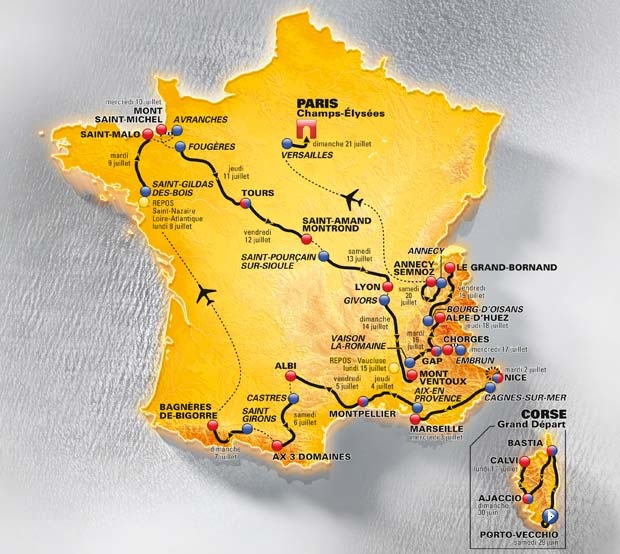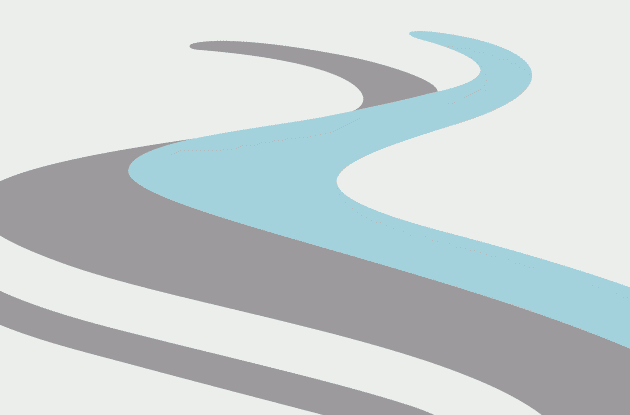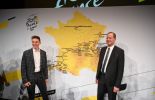2013 Tour de France Route Announced in Paris
Fighter jets streaming red, white and blue smoke will fly above the riders on June 29 as they start the 2013 Tour de France on the island of Corsica, being visited by the race for the first time in its history. The 2,088-mile race ends three weeks later at night against the backdrop of a floodlit Arc de Triomphe in the City of Lights.
The presentation of the 2013 Tour de France route for the storied race was clouded by concerns about doping after Armstrong was stripped of his seven Tour de France titles following a U.S. doping probe. Cycling teams called Wednesday for an independent audit into the sport's fight against doping.
In the 2013 race, climbers may be favored with a more mountainous route than in recent editions, including 28 high mountain passes. On July 18, riders will climb the famous Alpe-d'Huez and its 21 steep switchbacks twice in the same stage, only four days after ascending the feared Mont Ventoux.
Tour de France director Christian Prudhomme said the 2013 Tour de France would be the first in 10 years to take place entirely within French borders. As racers whiz past world-famous sites such as the Mont Saint-Michel monastery and the palace of Versailles, the message sent to the Tour's vast audience will be "Thanks for coming to France. We French might not be fantastic, but our country is magnifique!" Prudhomme joked.
Organizers made a decision to shorten the combined length of the race's two individual time trials in part as a response to the domination in this year's Tour de France by champion Bradley Wiggins.

The 40 miles of time trials split evenly between the 11th and 17th stages is almost 25 miles less than in the 2012 Tour, which could play into Olympic time trial champion Wiggins' decision of whether to defend his Tour title or focus instead on another of cycling's Grand Tours, the Giro d'Italia and the Spanish Vuelta.
The first individual time trial on July 10 finishes against the backdrop of the Mont Saint-Michel monastery.
Organizers have given sprinters like Mark Cavendish a gift — the June 29 stage finish in Bastia is the first time since 1966 that a sprinter can hope to wear the yellow jersey after the first stage, Prudhomme explained.
The traditional Bastille Day stage on July 14 is the race's longest at 150 miles, ending with the 13-mile ascent of Mont Ventoux, one of cycling's most mythic climbs.
In another first for the race, which has only stopped for the two world wars since the first Tour in 1903, riders will begin the final stage on July 21 inside the grounds of the Versailles Palace. With the sprawling 17th-century chateau as a backdrop to the race start, "It's going to be a knockout," Prudhomme said.
The last stage will start later in the day than traditionally and timed for a finish at about 9 p.m., while there is still enough light to ensure riders' safety, Prudhomme said.
"We wanted the finish of the 100th Tour de France to be unique," Prudhomme explained.
So the final stage of the 2013 Tour de France will take place at dusk in Paris - the city of lights. In another change to tradition, the eight laps of the Champs Elysees will send riders all the way around the giant Arc de Triomphe arch at the top of the grand avenue, rather than just passing in front of it as in past years.








